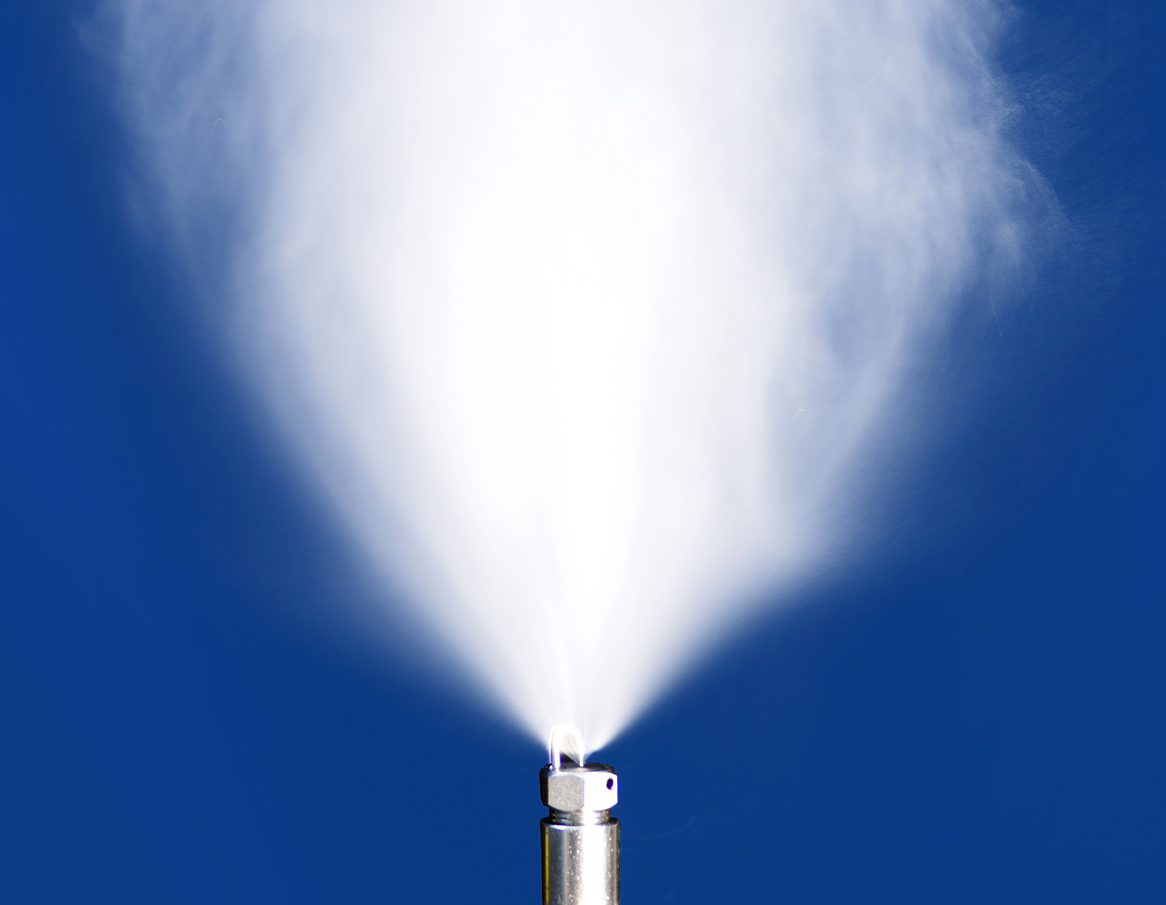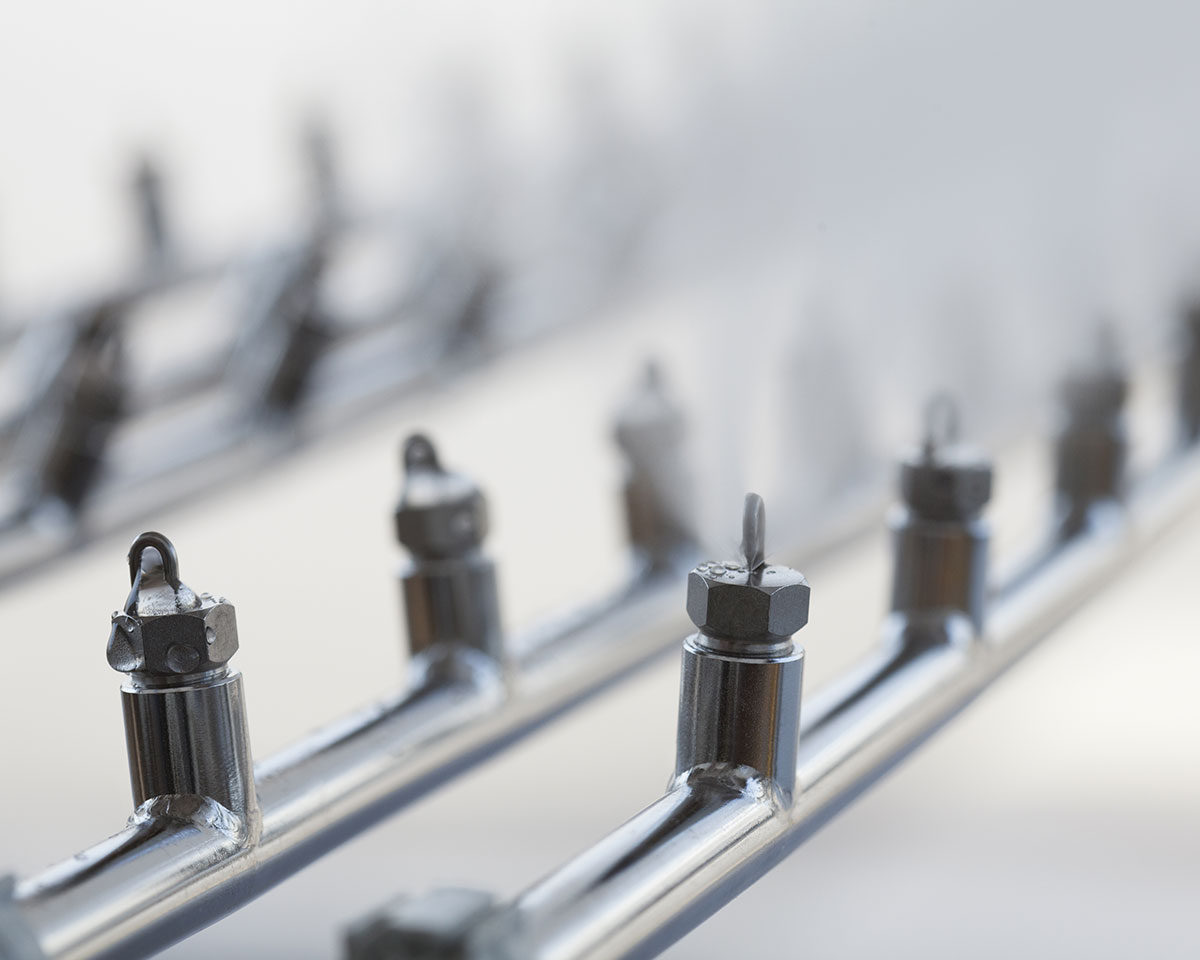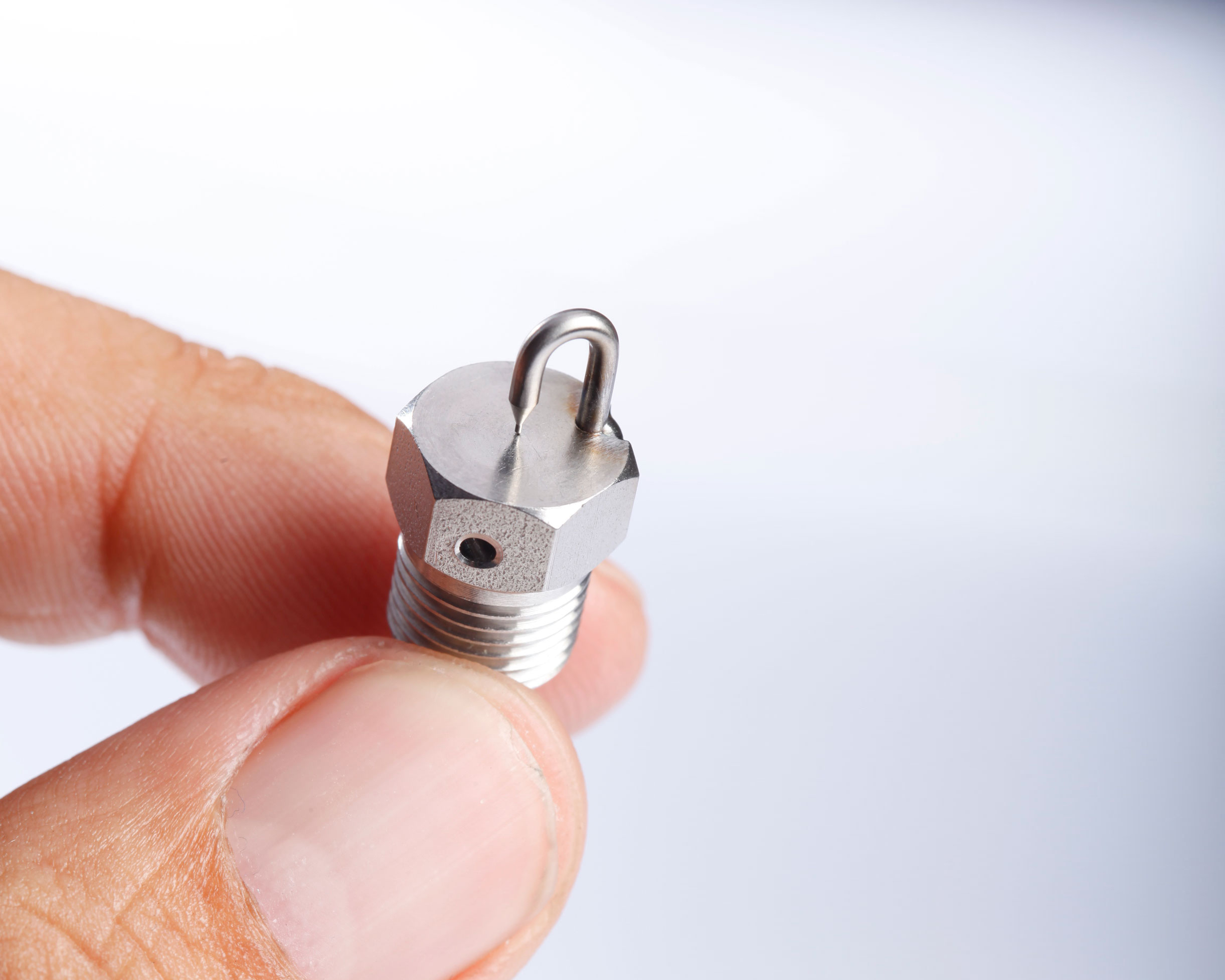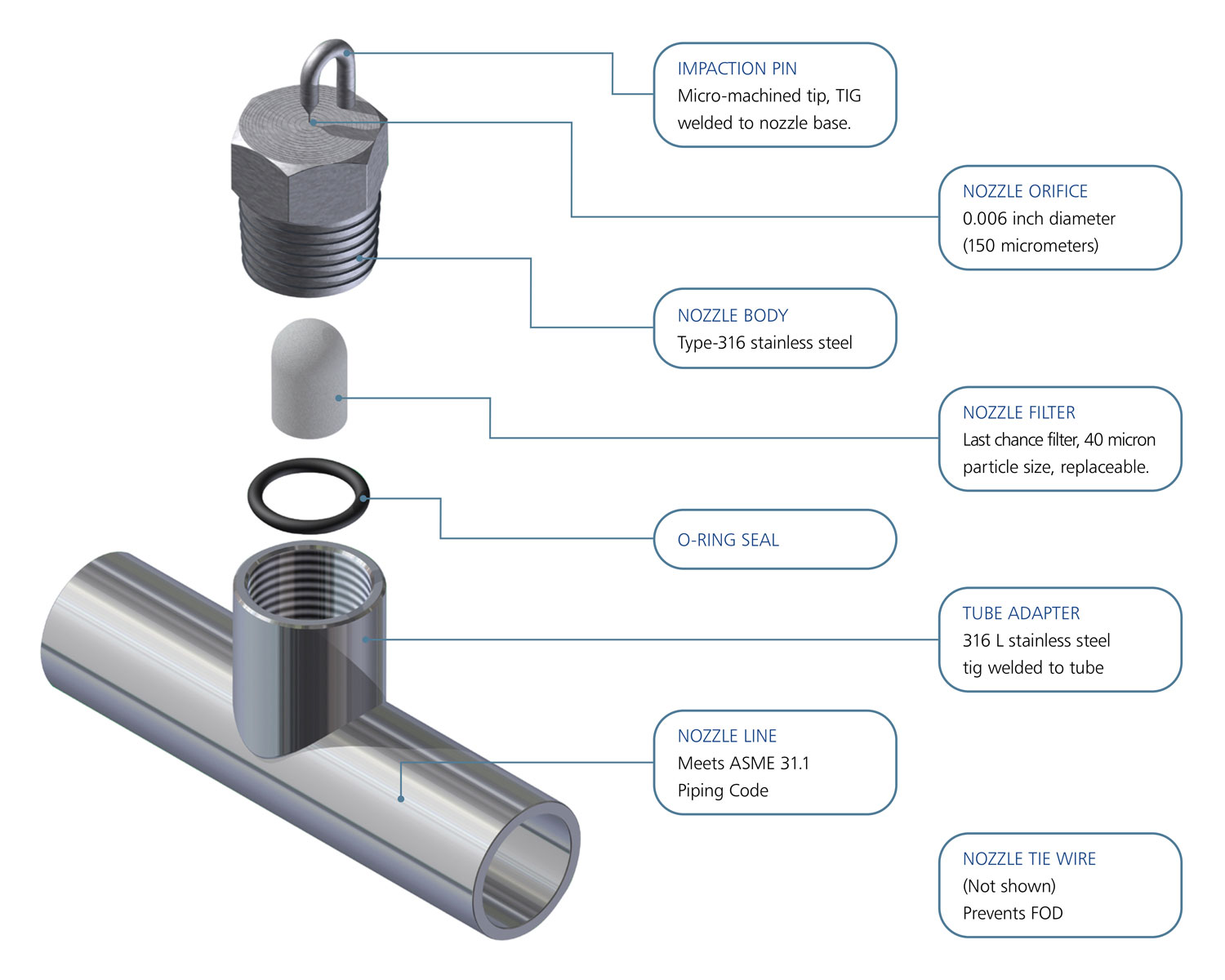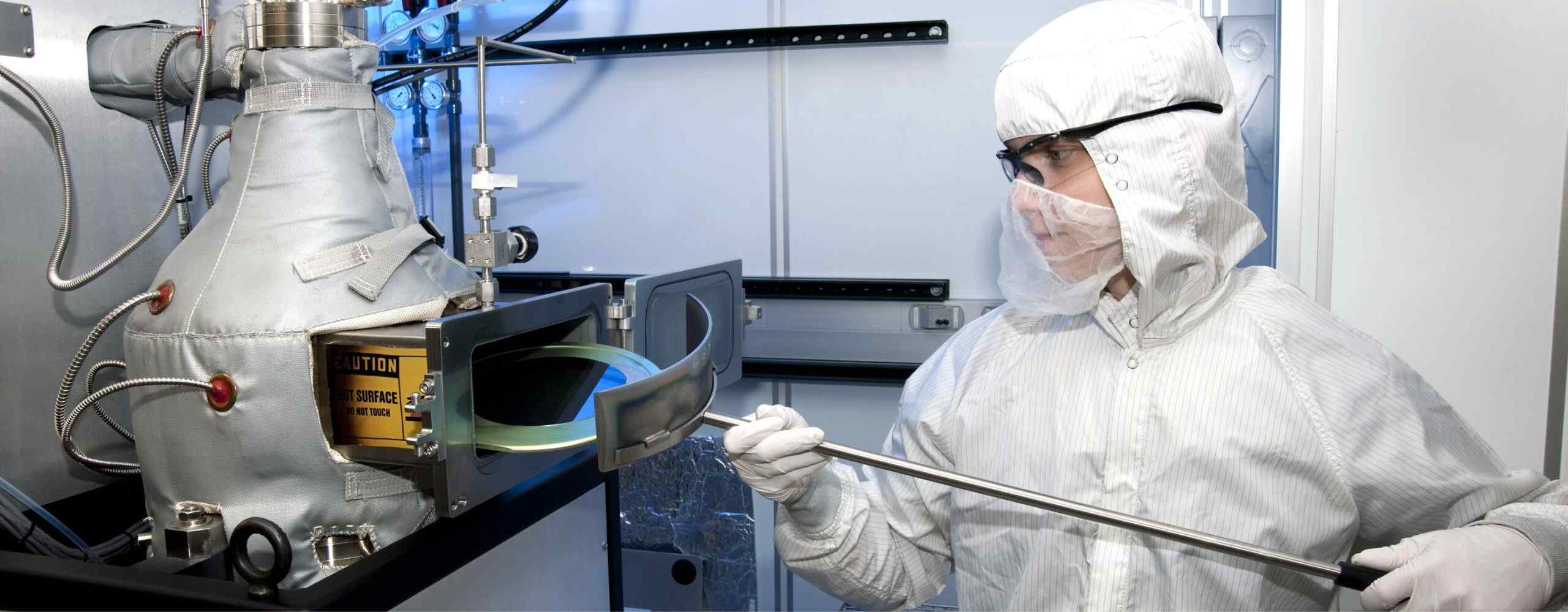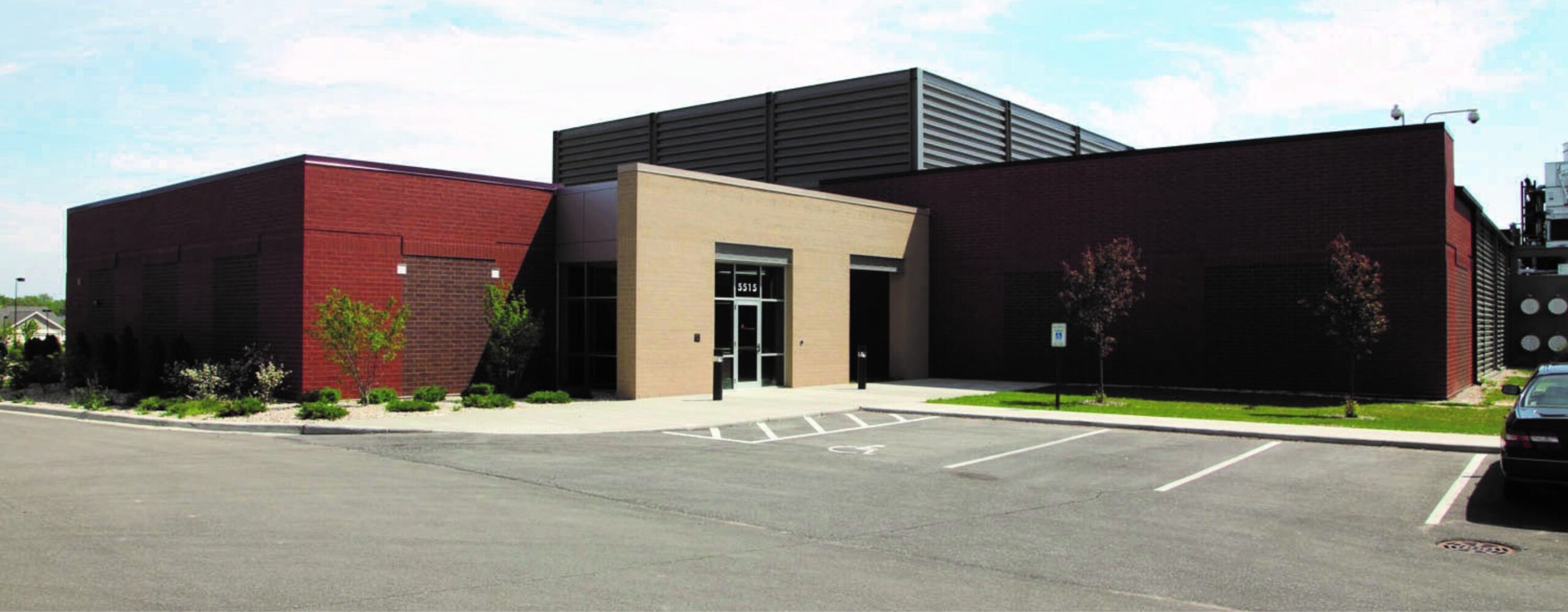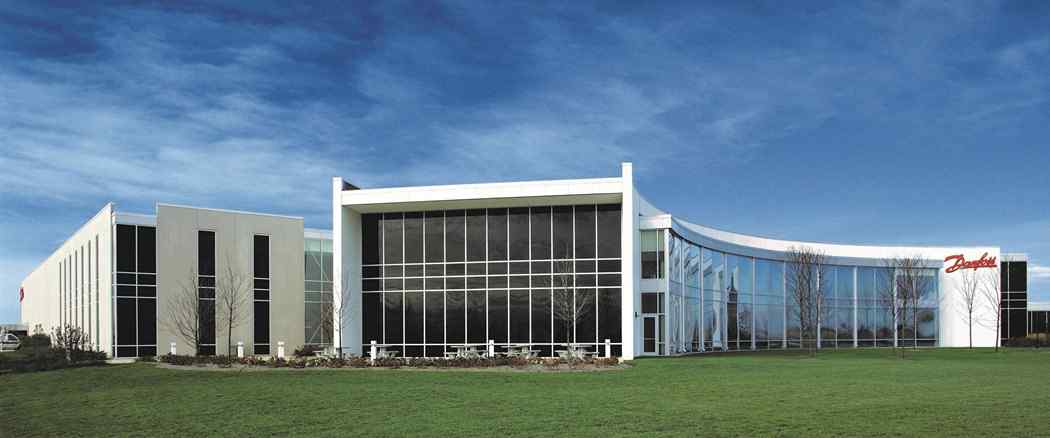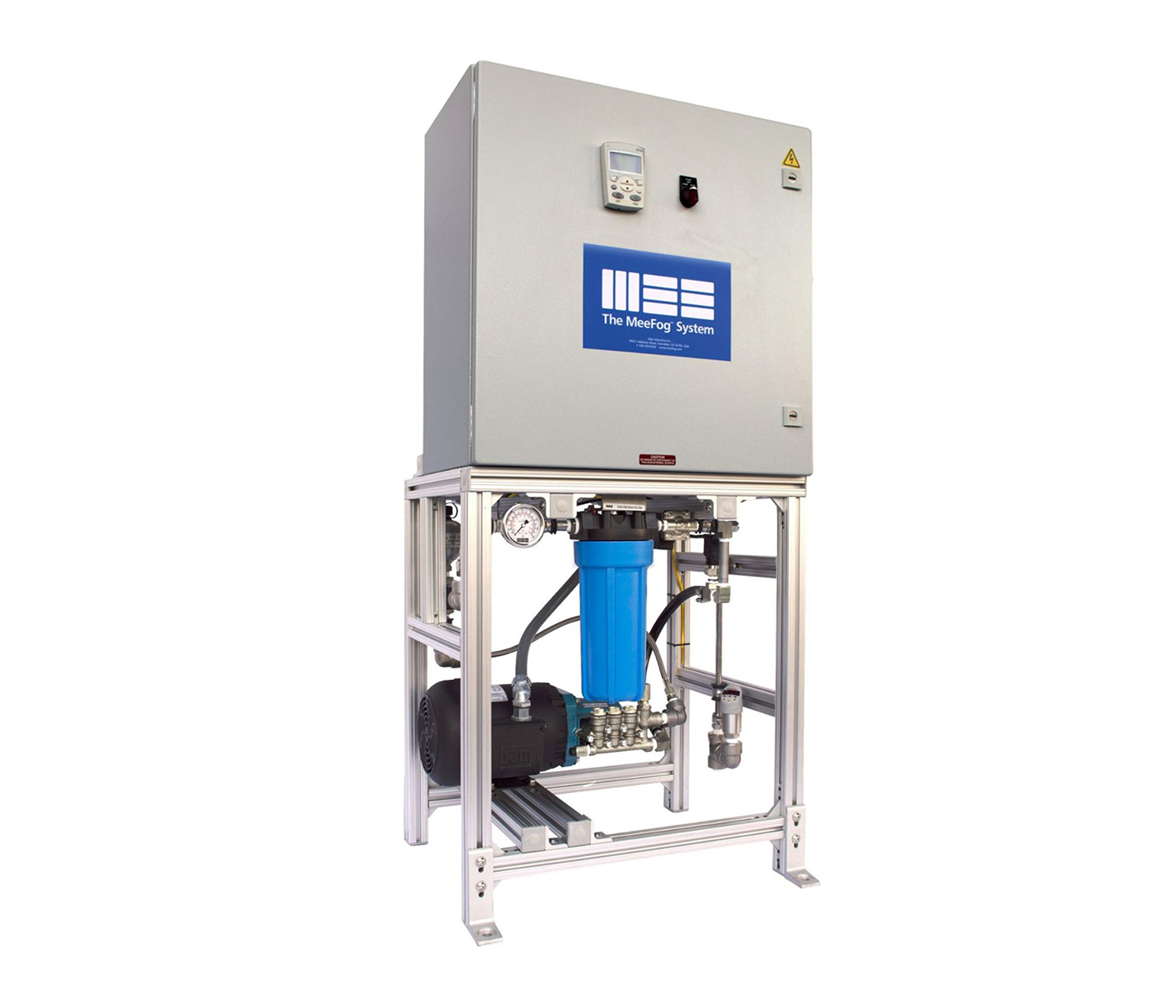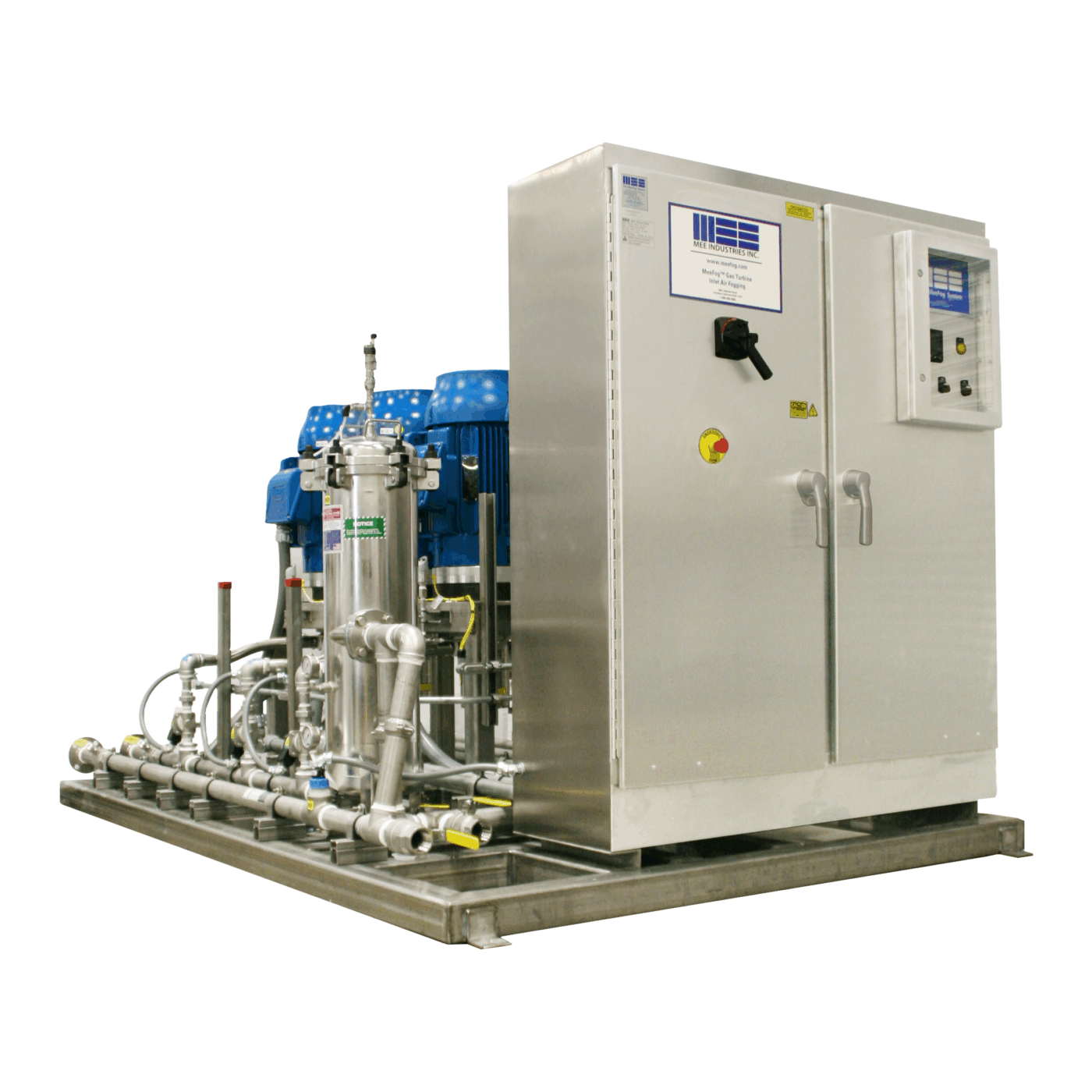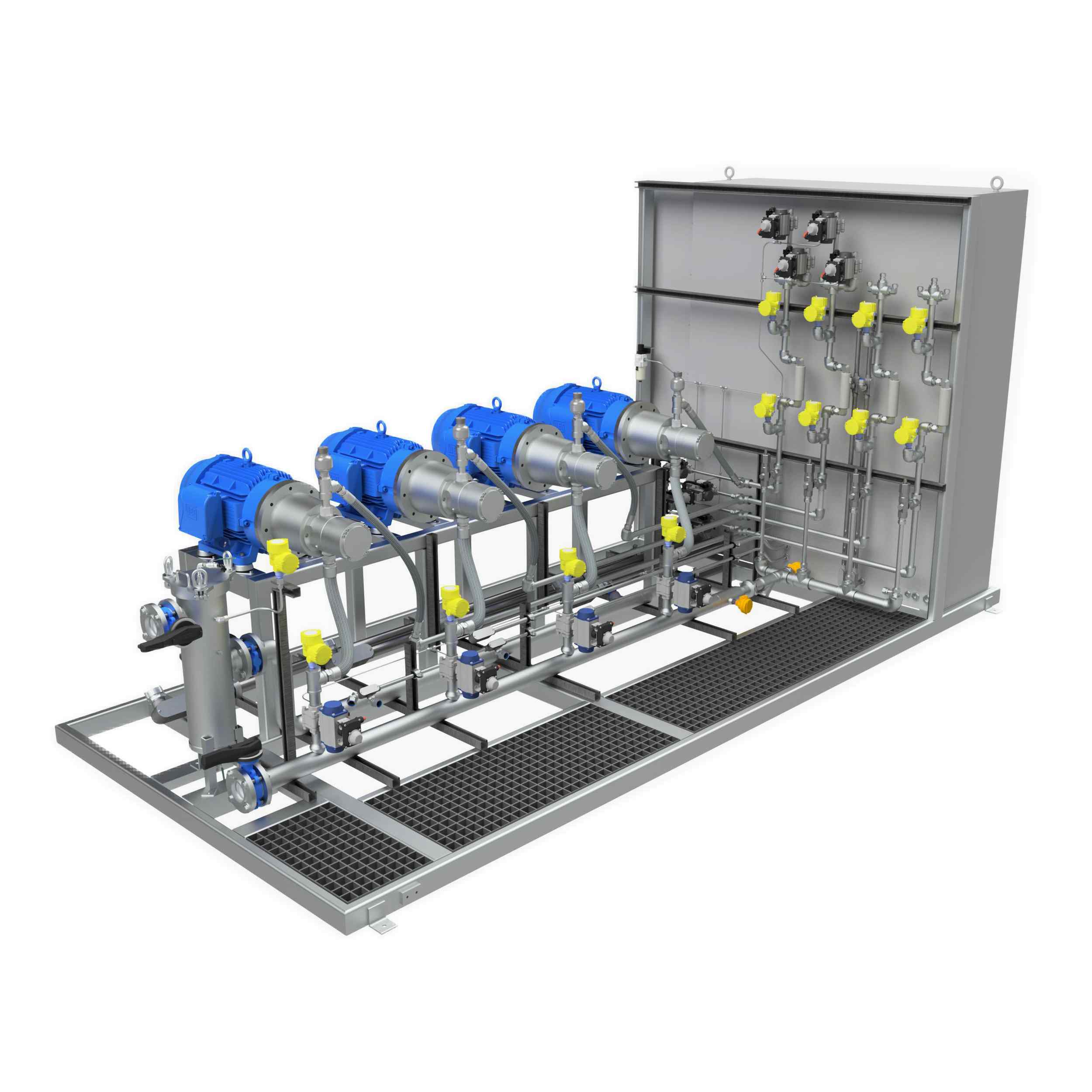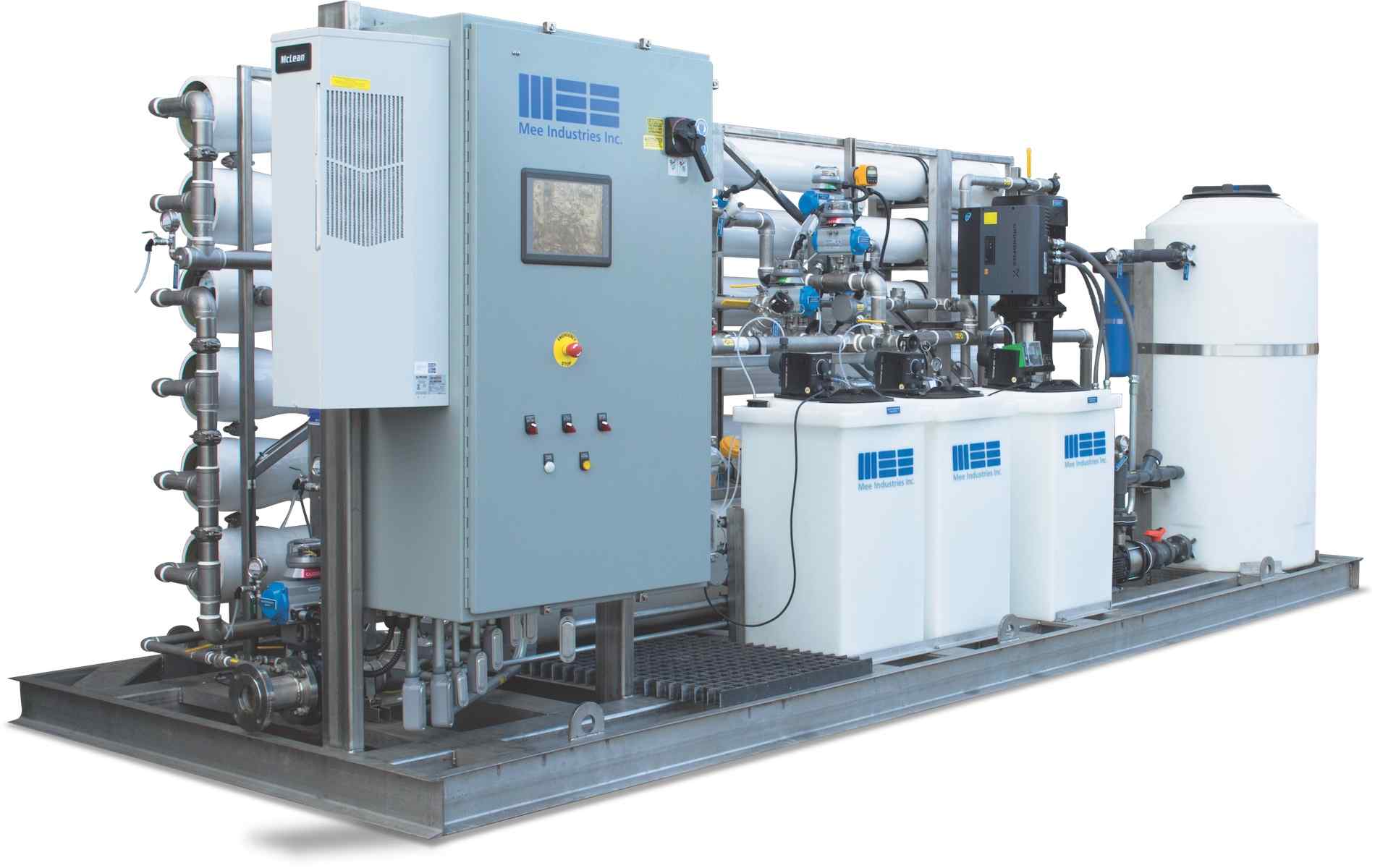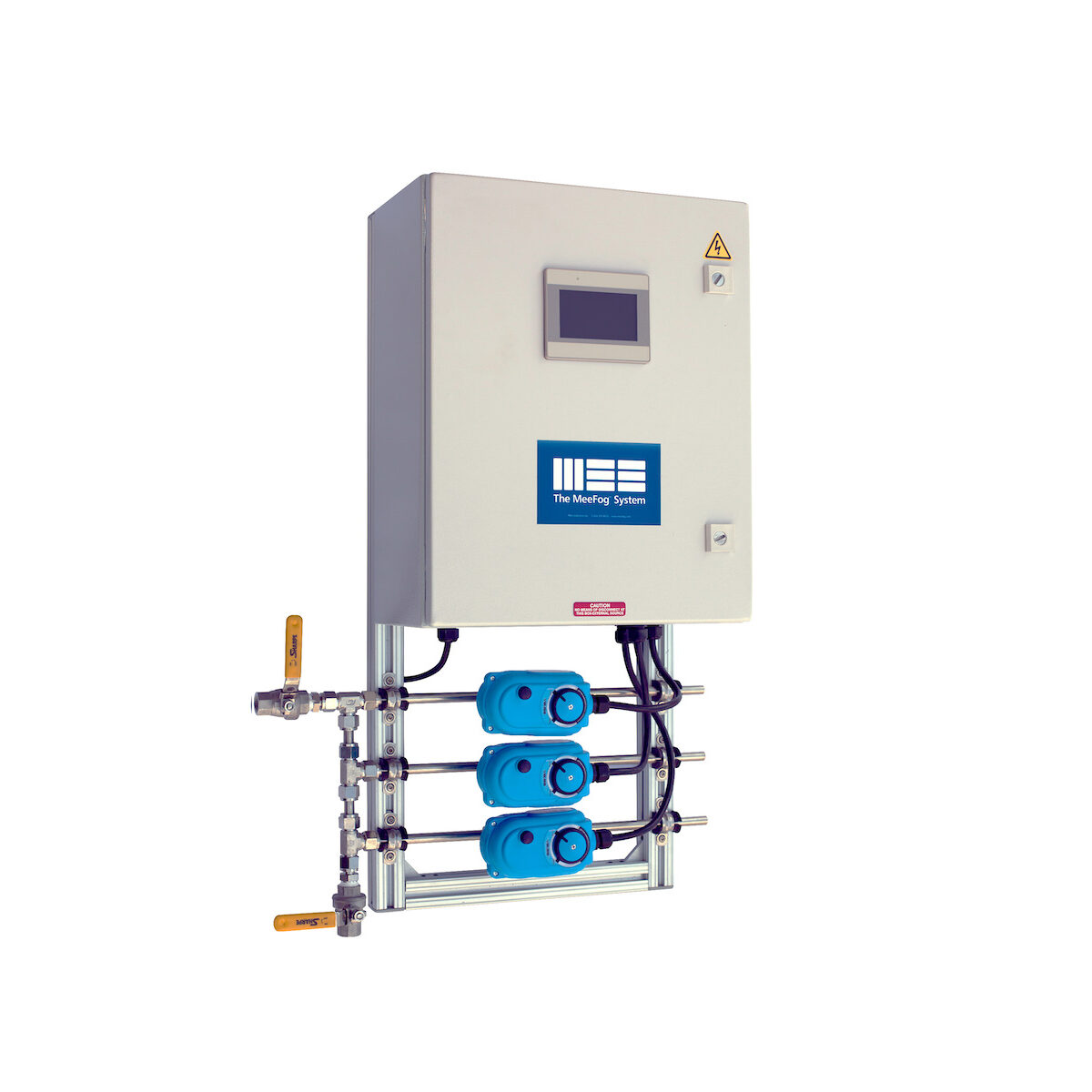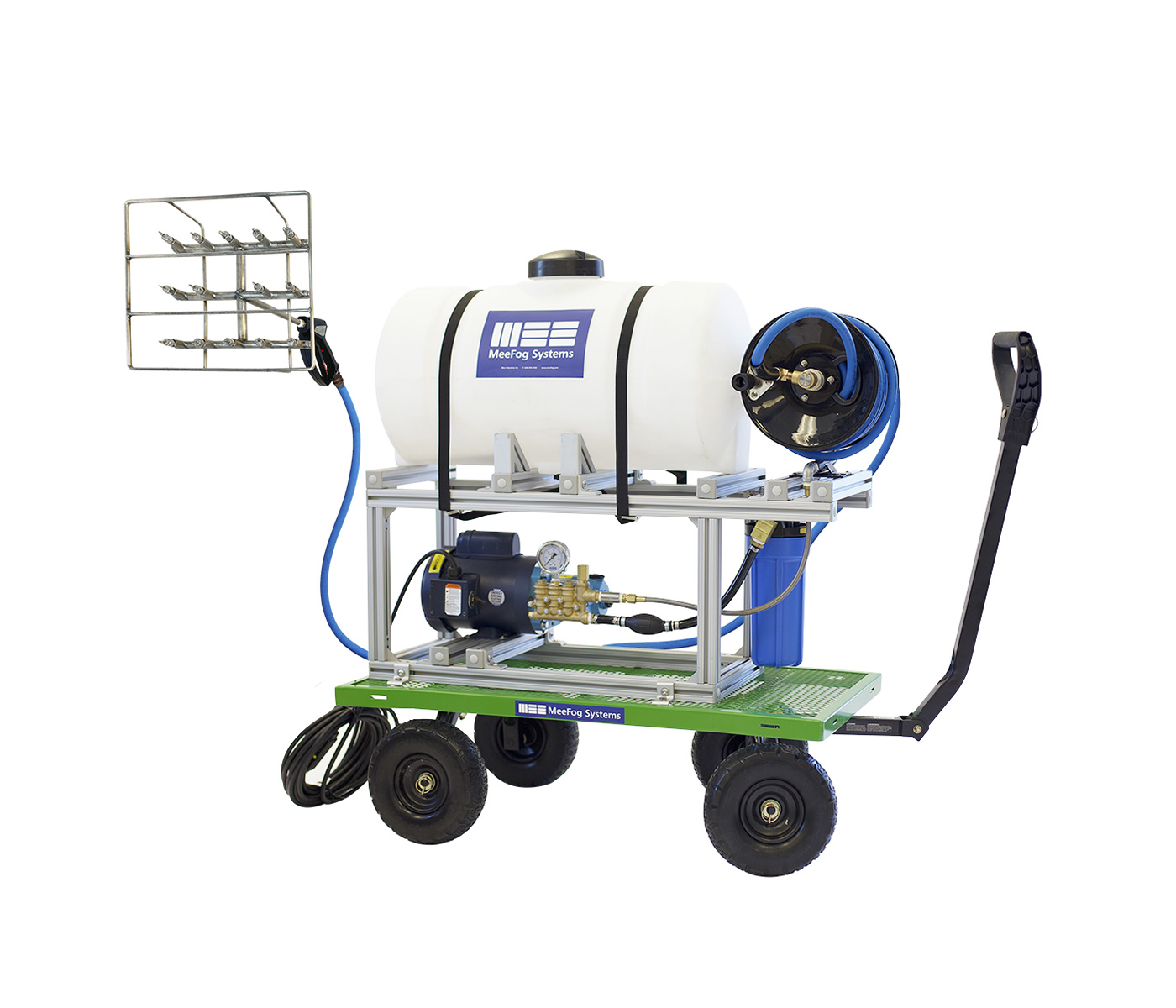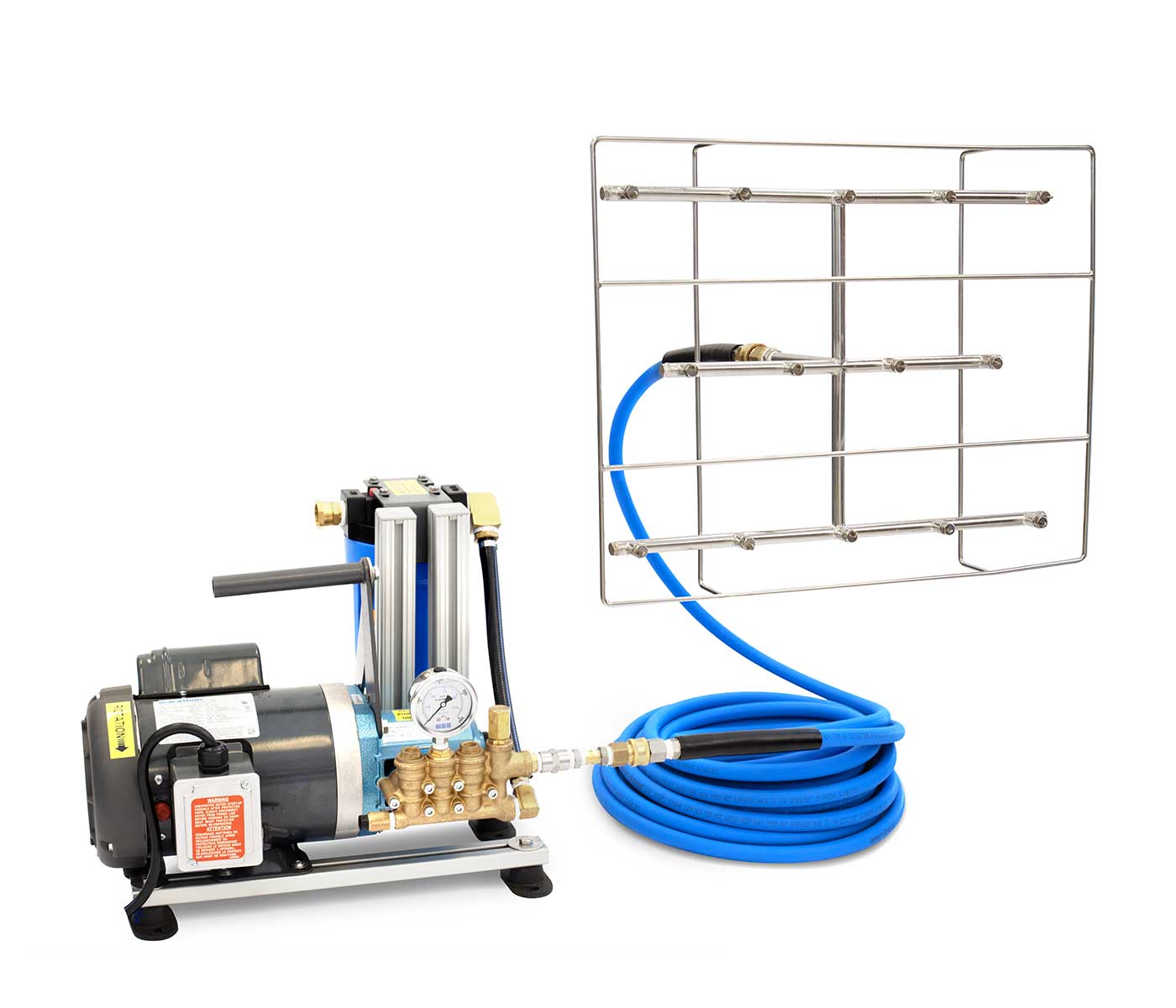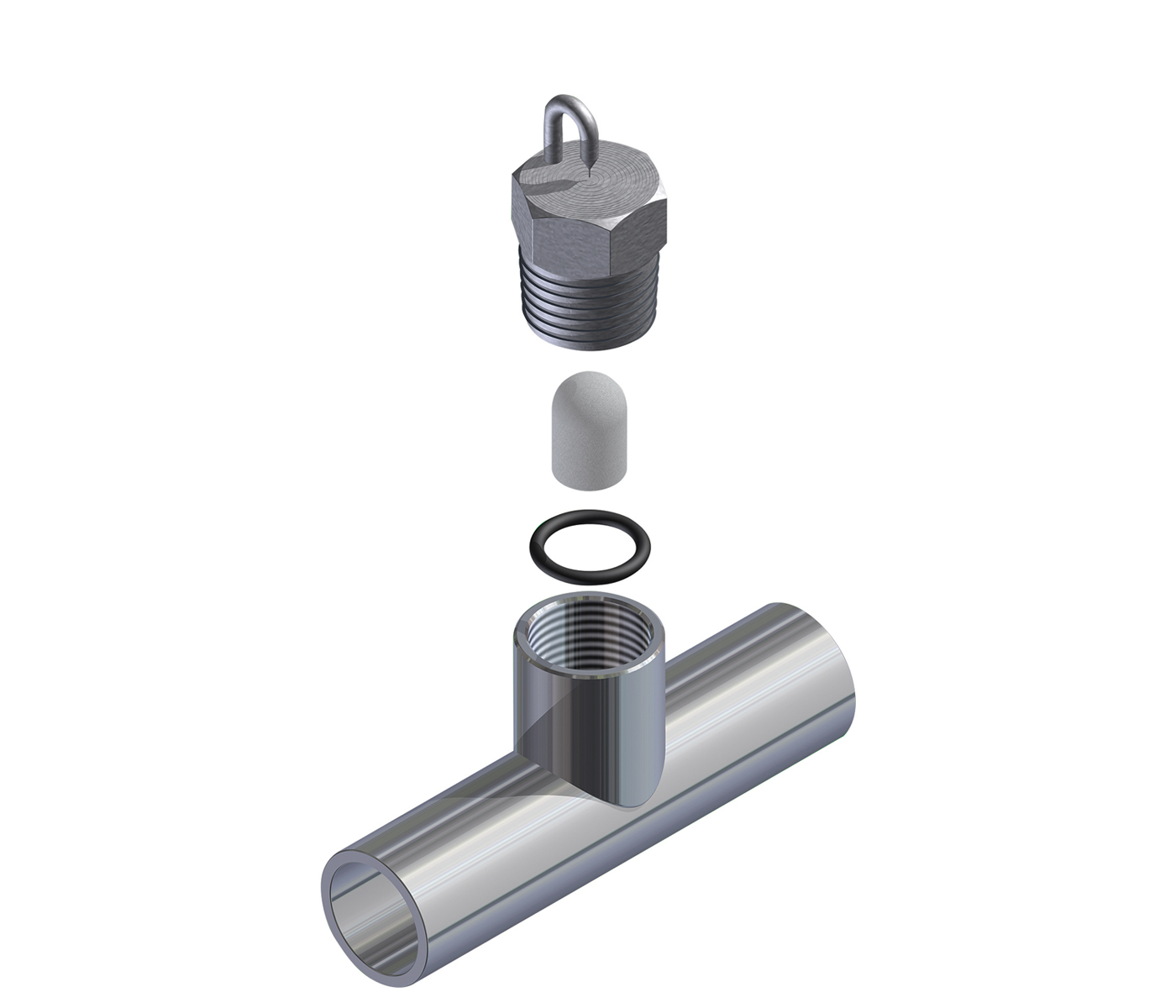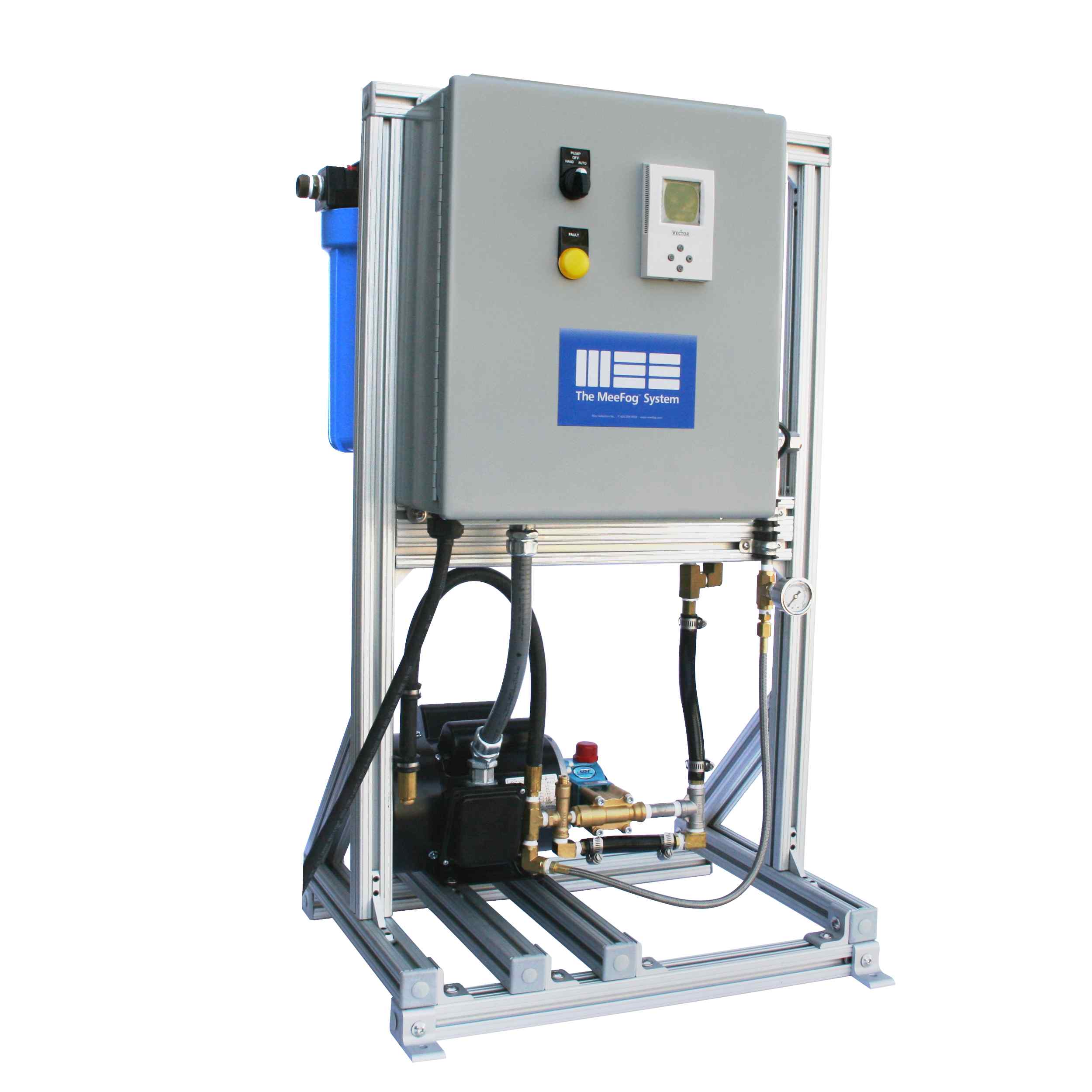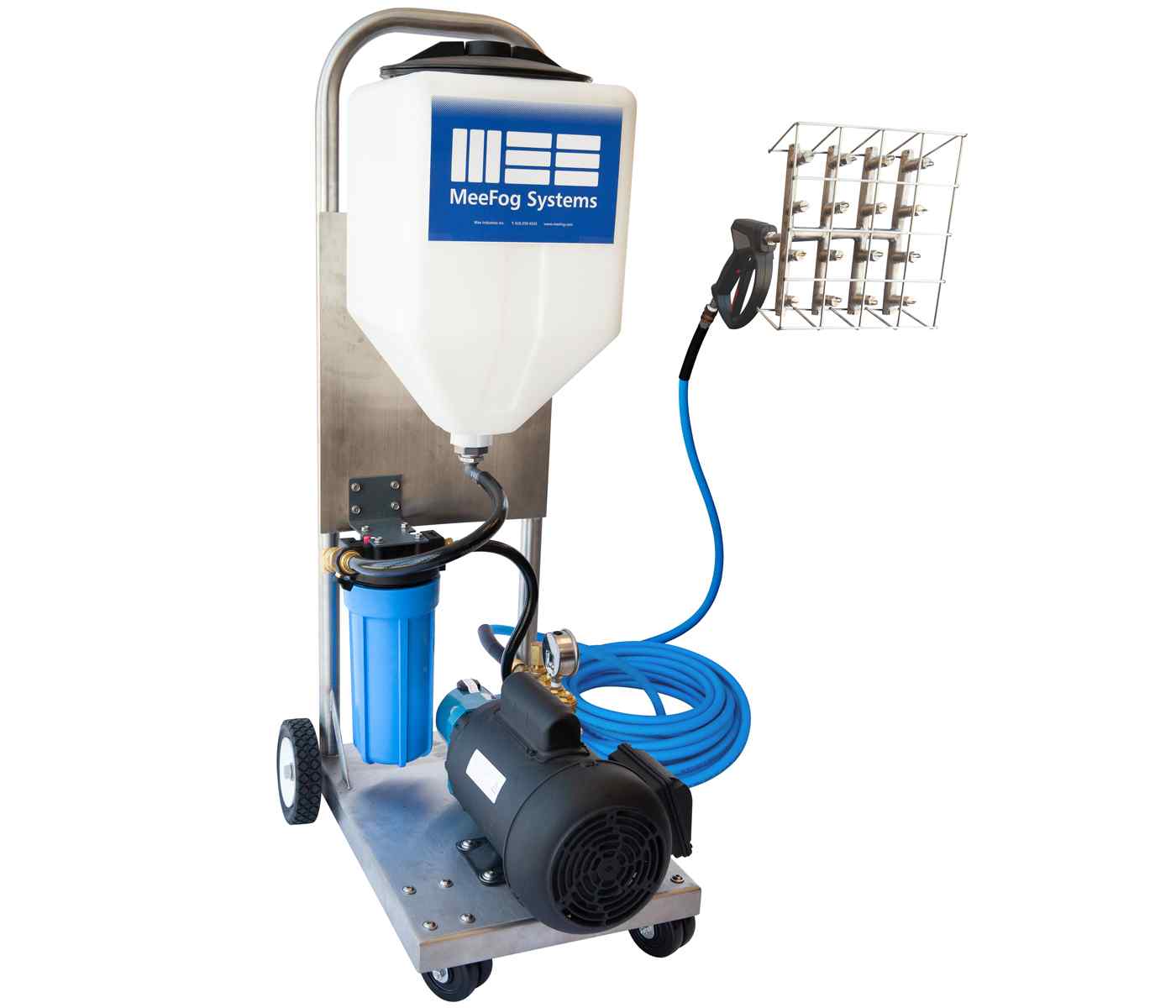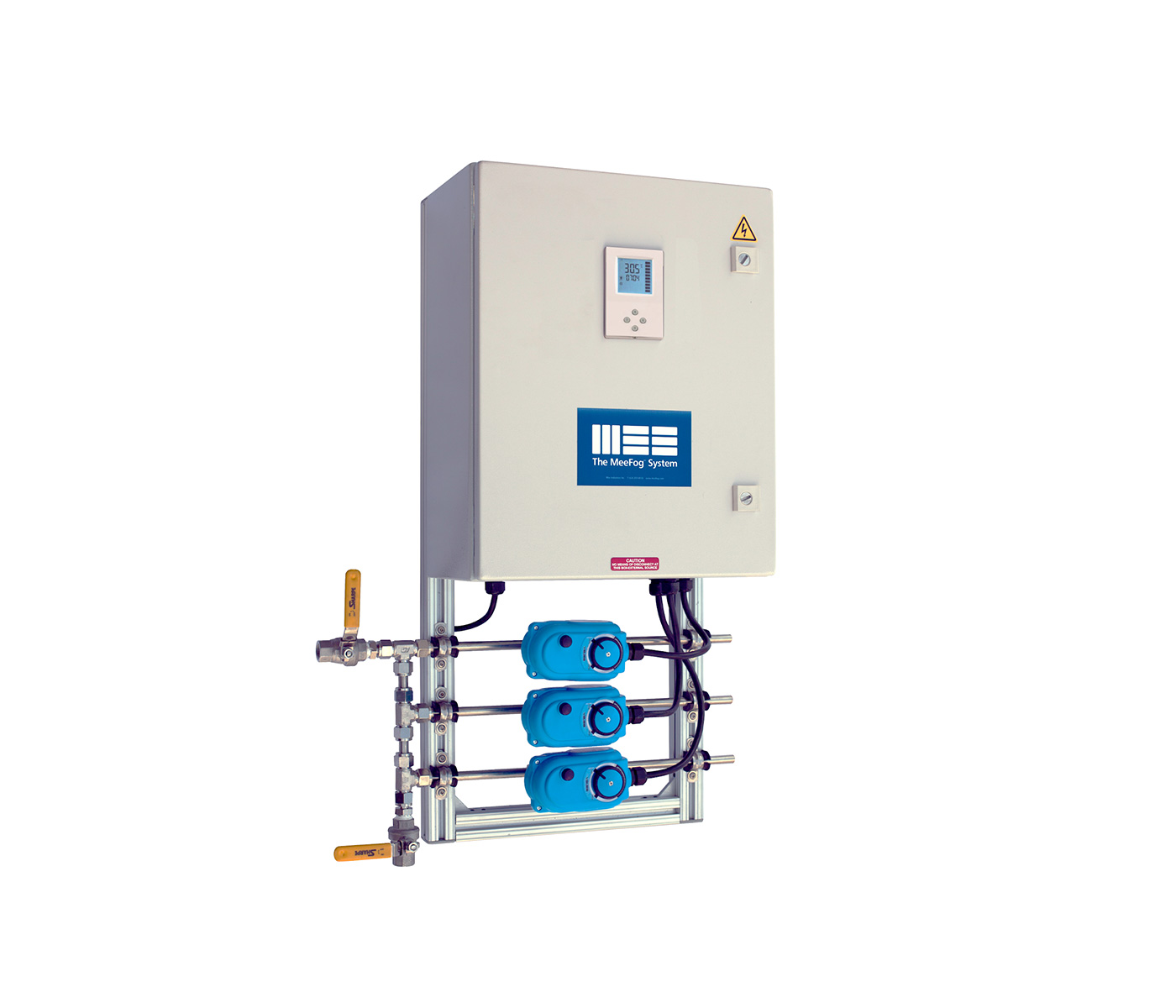Humidification Systems for Universities & K-12
Central Humidifier Supplies Diverse Humidity Loads

Universities require the ability to supply proper levels of humidity to a wide range of climate zones. In a University setting labs require the most load in order to exhaust all of the air, classrooms and common areas will have separate requirements.
MeeFog uses a central pumping unit that supplies multiple air handlers and is an energy efficient solution. Each rack includes a programmable logic controller (PLC) which allows the system to operate safely in automatic mode using the building control system.
Unlike steam systems, there are no calcification issues, no elements to burn out, no floats to get fouled, and no bubble indicators. Fog system maintenance requires only oil changes and filter checks. Meefog humidification systems use substantially less energy than other humidification technologies, including compressed air, ultrasonic, and especially steam systems.

Benefits:
- Reduced energy consumption.
- Lower maintenance costs.
To find out more about how the system can work for you, contact a MeeFog sales engineer.
MeeFog HVAC Installation Diagram
Click the different areas of the diagram below to learn more information about our system.
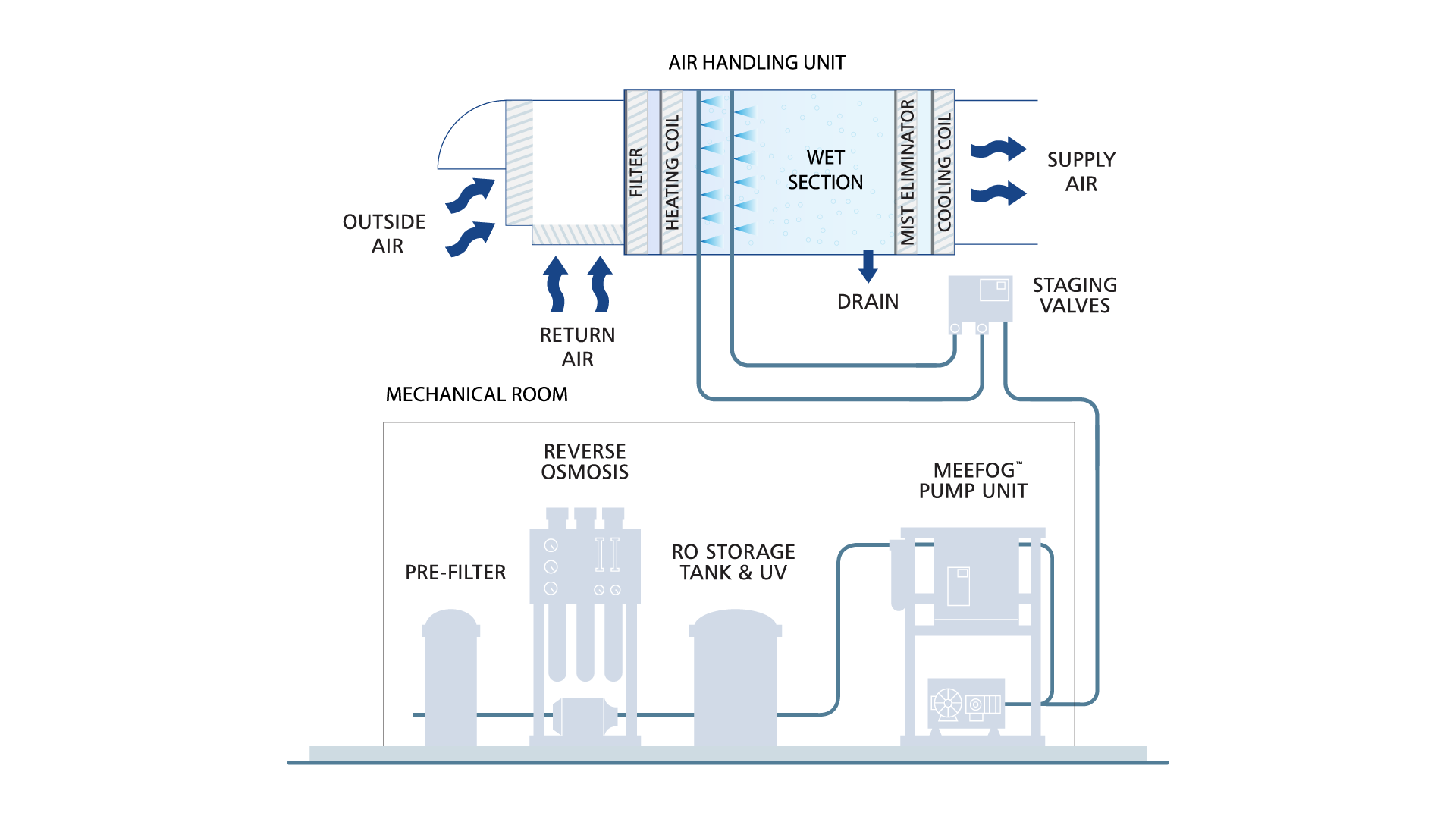
Reverse Osmosis Water Purification
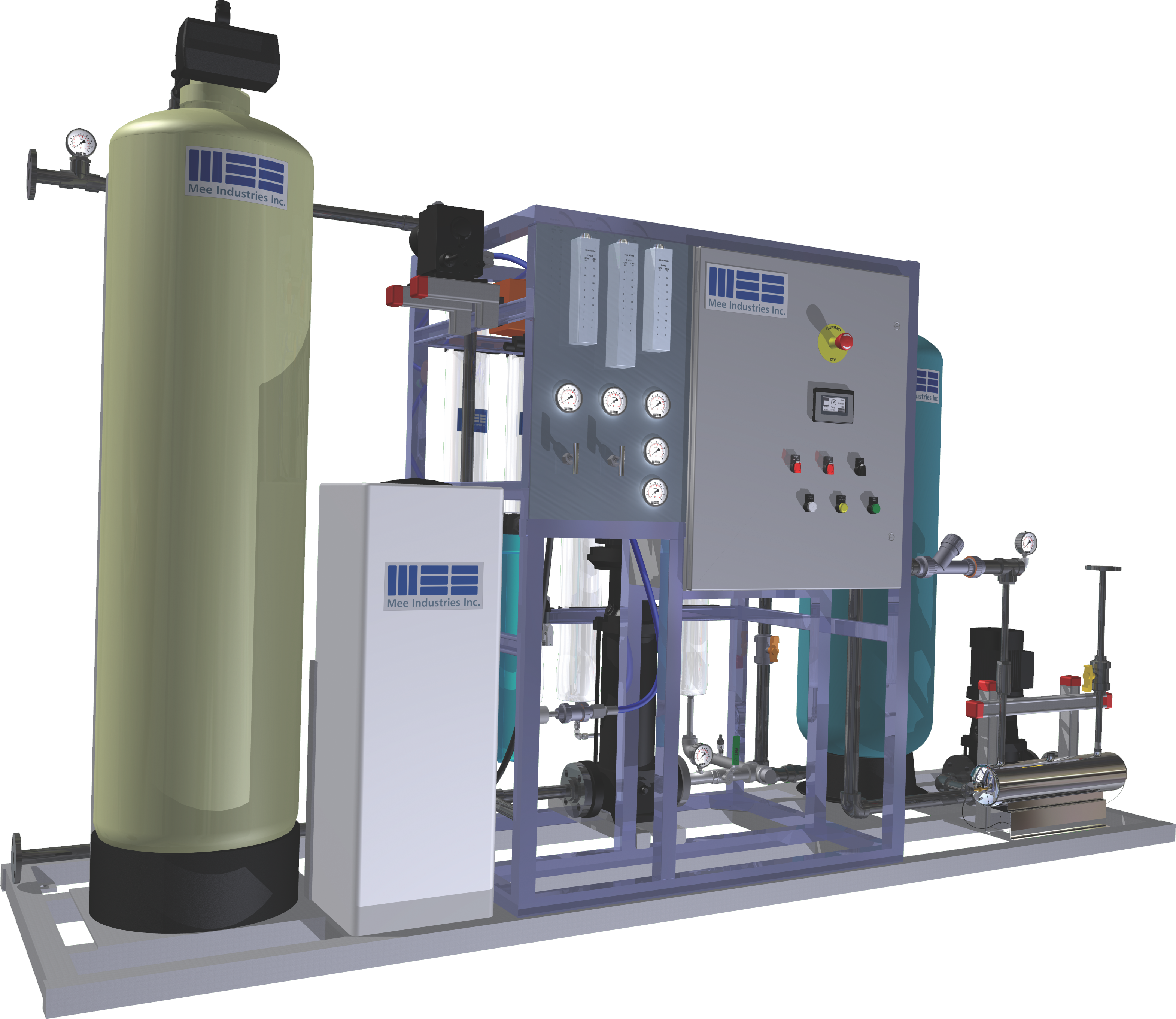
Reverse Osmosis Water Purification
City water is treated using the Reverse Osmosis water treatment rack. This purifies the water, removing minerals, particulate, and microorganisms. Systems include automated membrane flushing, pre-treatment filtration, and UV Re-Circulation.
MeeFog Pump
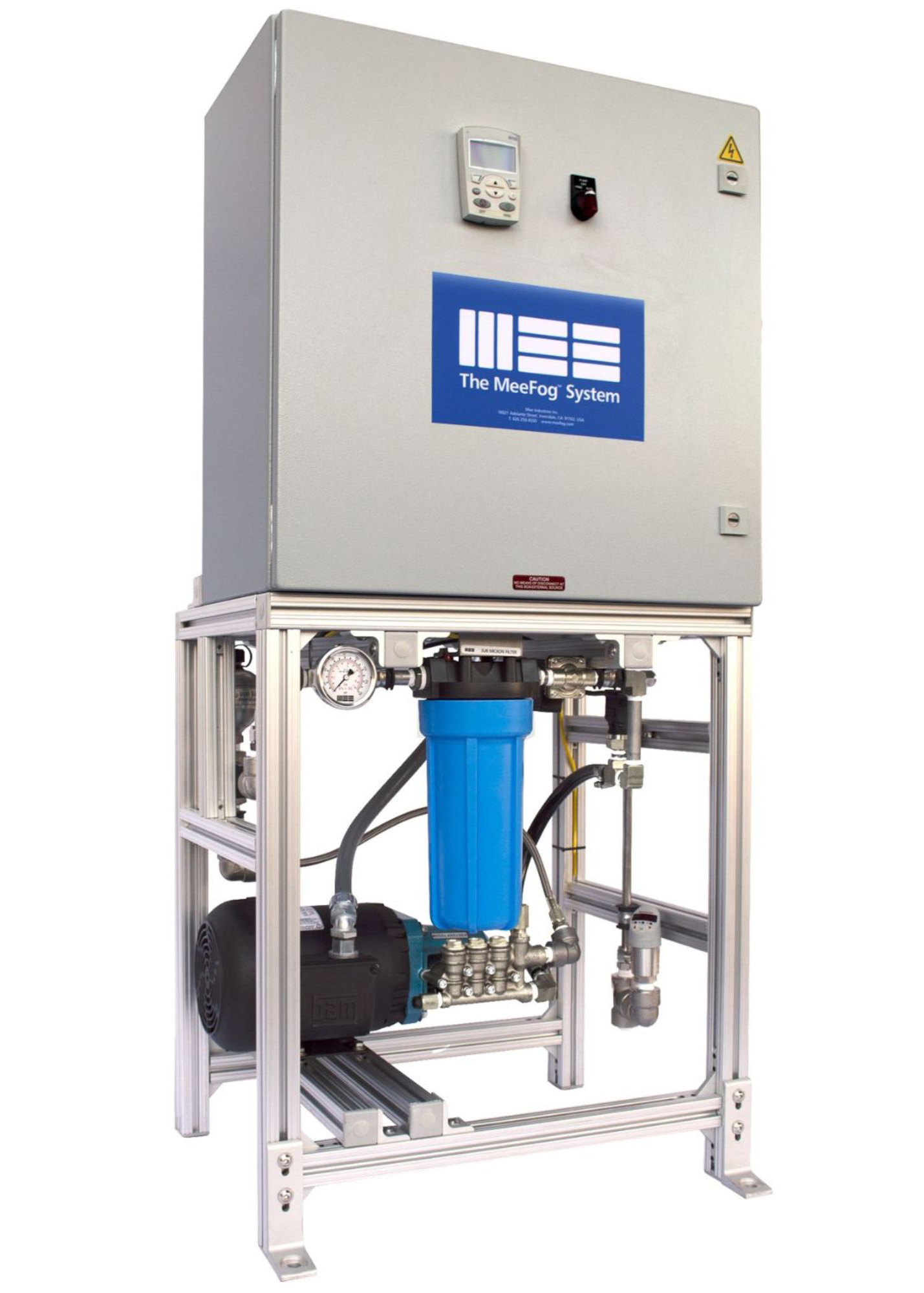
MeeFog Pump
The high-pressure pump maintains 1000 psi water pressure in order to atomize the water into tiny droplets that can evaporate into the air stream. The pump rack has a VFD with panel-mounted controller that maintains pressure when staging valves open and close.
Staging Valves
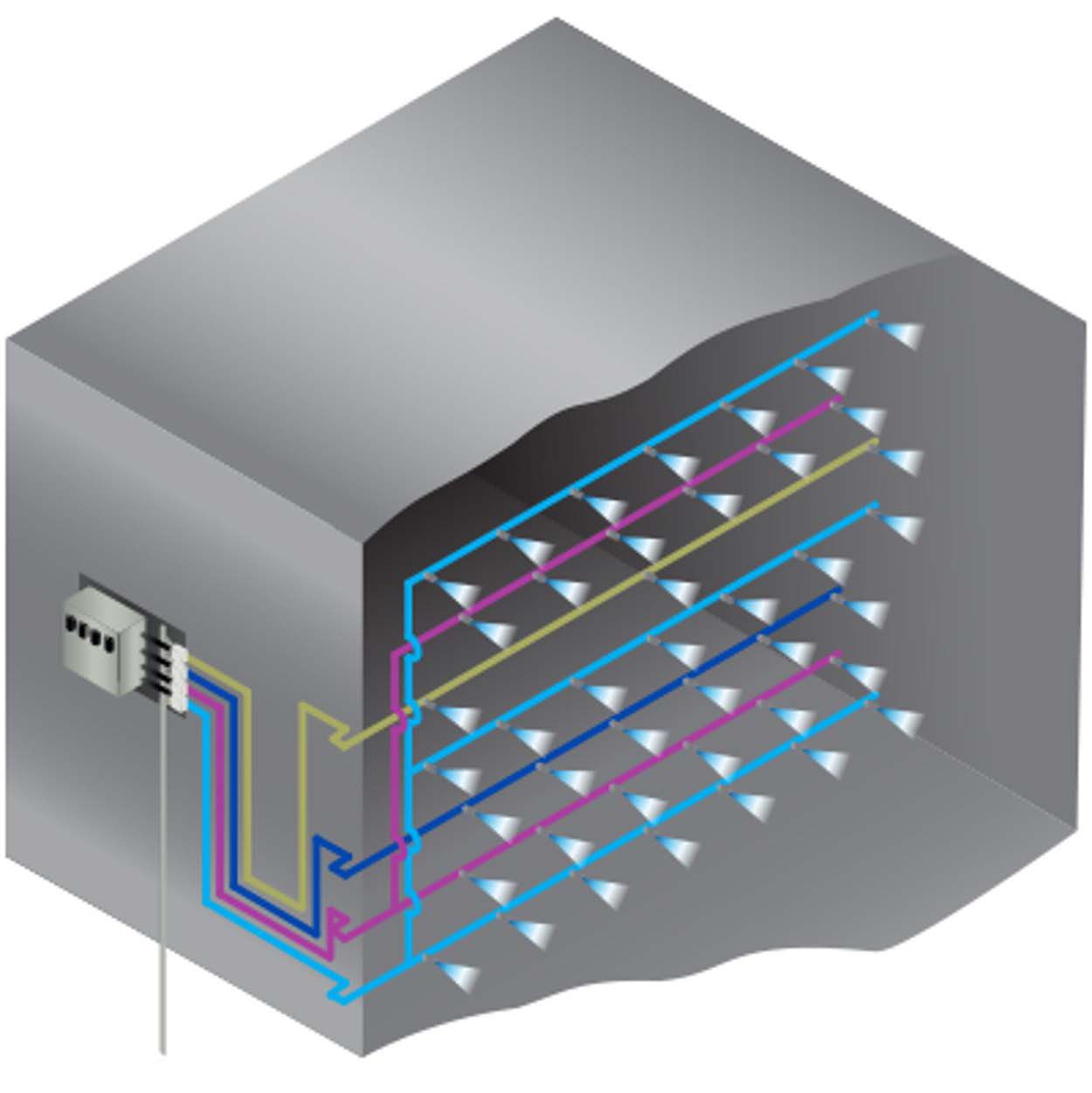
Staging Valves
The valve panel allows precise control over how much humidification is injected into the air stream based on a signal from the BMS. It is possible to control the humidification level in the space to plus or minus 1% RH.
Nozzle Manifolds
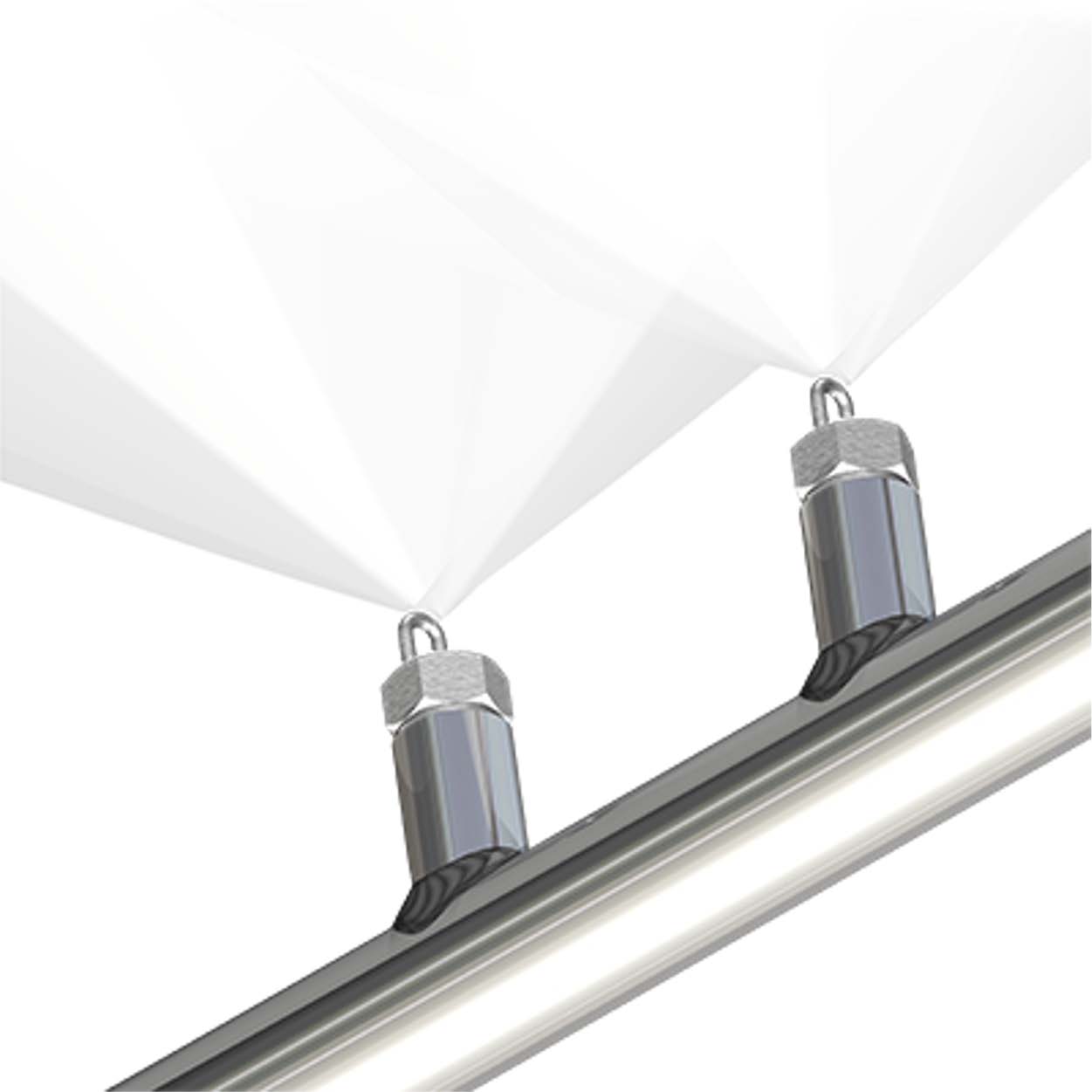
Nozzle Manifolds
Fog nozzles are mounted on stainless steel tubing inside the air handler. These nozzles produce droplets in the 10-micron range. These precision nozzles are manufactured and tested in Mee Industries' own facility.
Mist Eliminator
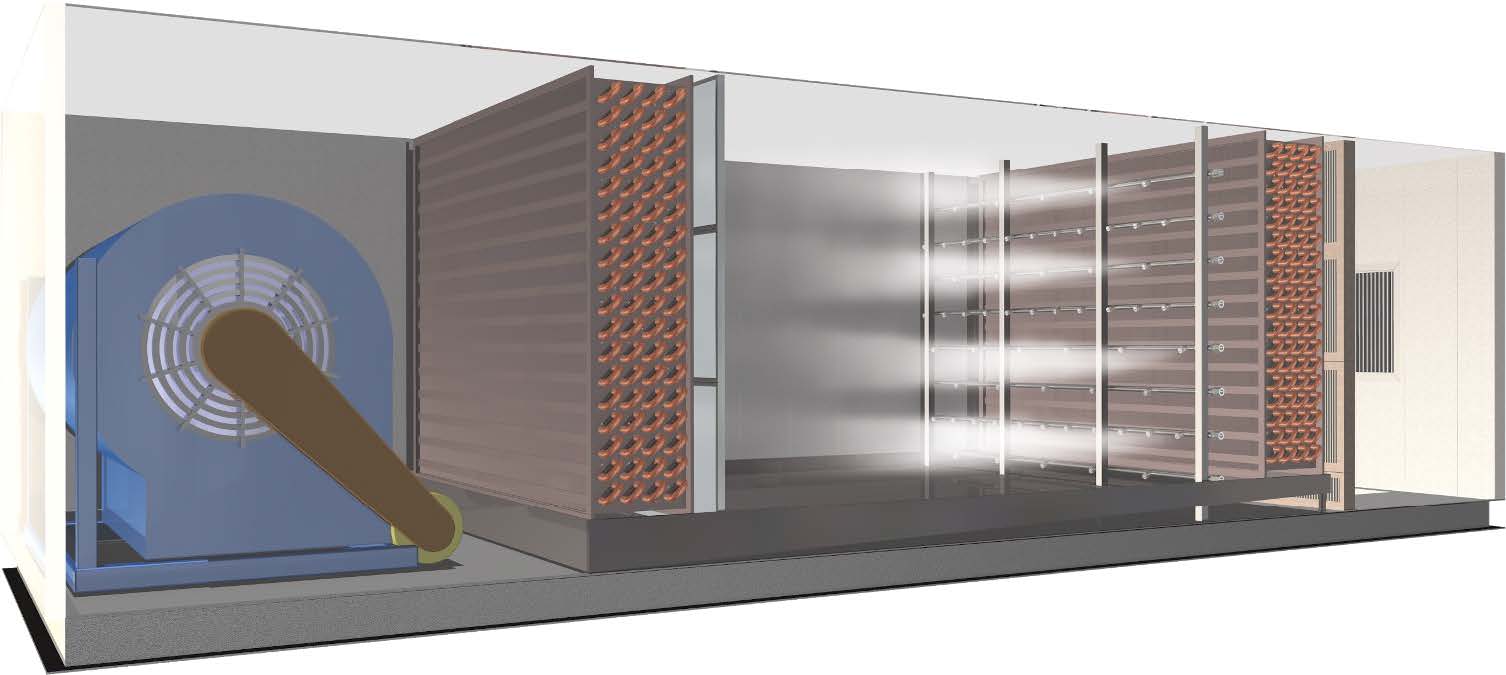
Mist Eliminator
The mist eliminator removes water droplets larger than 5 microns. The filter pads can come off their stainless steel frames and can be washed or replaced easily.
System Overview
Nozzle Comparison
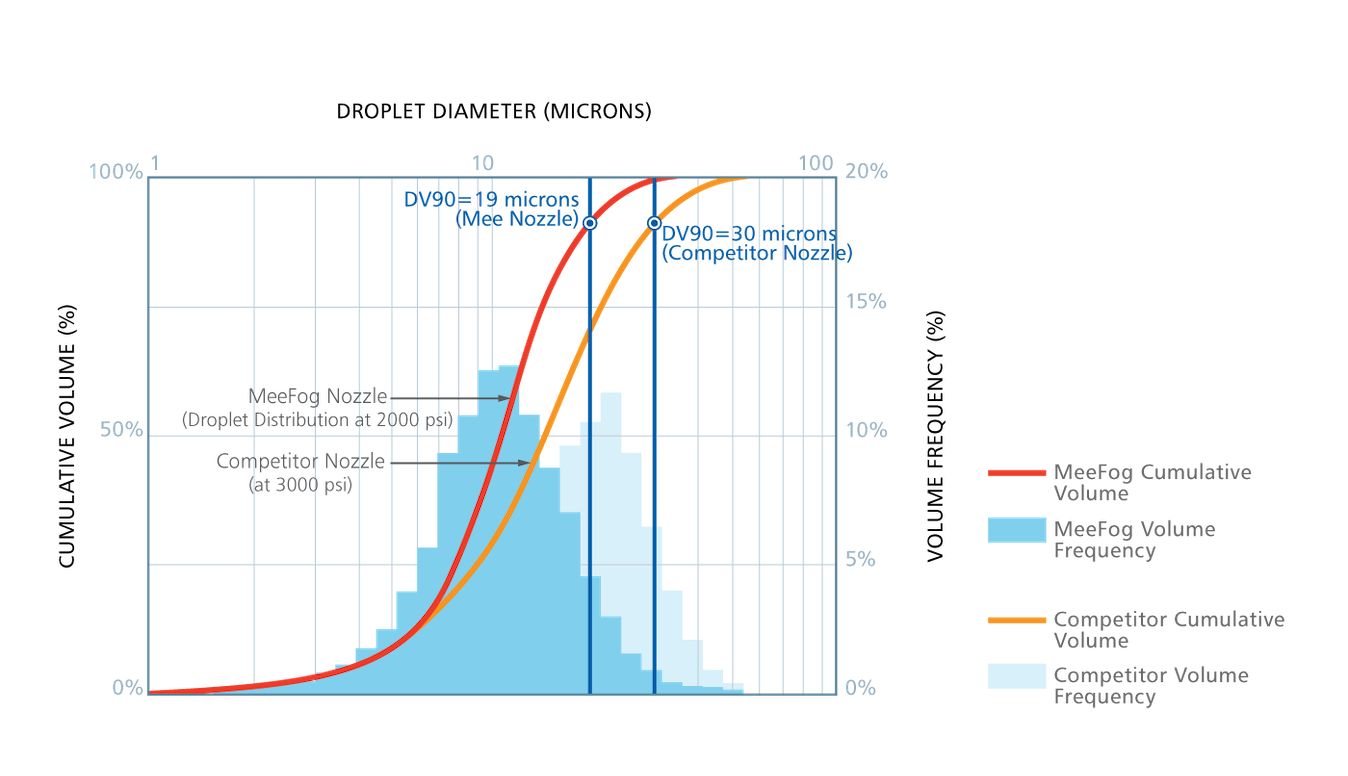
At an operating pressure of 2000 psi, the resulting average droplet size is roughly one tenth the diameter of a single strand of human hair.
MeeFog System Benefits
- Evenly distributed humidification.
- Increased reliability.
- Reduced energy costs.
- Does not require compressed air or steam.
- Reduces electrostatic shock.
- Low energy consumption.
- Precise humidity level control.
Droplet Comparison
 Want Proof?
Want Proof?
We’ll gladly supply a detailed payback analysis report for your Hospital or Medical Center including:
- Installed MeeFog system cost.
- Predicted process gains per year.
University & Schools FAQ
Universities and libraries include diverse environments such as classrooms, lecture halls, study areas, and archives—each of which benefits from stable humidity. Stable humidity in educational environments helps maintain comfort, concentration, and health for students and staff. Low humidity can increase virus transmission, cause discomfort and fatigue, and damage books, paper, and archives. The recommended relative humidity (RH) range is 40–55%, which supports both wellness and preservation of valuable collections.
MeeFog systems consume a fraction of the energy required by steam humidifiers. Instead of using electricity or gas to boil water, MeeFog relies on a small high-pressure pump and a low-grade heat source (like a hot water loop) to create fine fog droplets that evaporate efficiently. This design allows schools and universities to cut energy costs by 50–80%compared to steam systems while meeting indoor air quality requirements.
Hach Hall, the first LEED Gold-certified chemistry building in the U.S., needed an efficient way to humidify labs served by 100% outside air. MeeFog was chosen because it improved indoor air quality in winter, cut energy costs, and integrated seamlessly with Johnson Controls Metasys automation. The system cost $107,000 annually, saving $30,000 compared to a gas boiler system, while also ensuring 100% availability with a backup pump.
Traditional steam humidifiers require large amounts of electricity or natural gas to boil water, driving up utility bills. MeeFog avoids boiling water entirely, instead using adiabatic fog humidification. On average, MeeFog uses 1/10th the energy of steam systems, making it the more sustainable choice for universities and schools focused on energy efficiency and environmental responsibility.
MeeFog systems help maintain the recommended 40–55% RH to protect books, paper, and bindings from drying, cracking, or degrading. At the same time, stable humidity reduces static buildup and supports better air quality, making libraries and archives healthier environments for staff and visitors.
Yes. Because MeeFog systems dramatically reduce energy consumption and support indoor air quality standards, they contribute to LEED points and align with campus sustainability initiatives. Iowa State University’s use of MeeFog in its LEED Gold-certified Hach Hall is a prime example of how fog humidification supports green building goals.
Featured Case Study
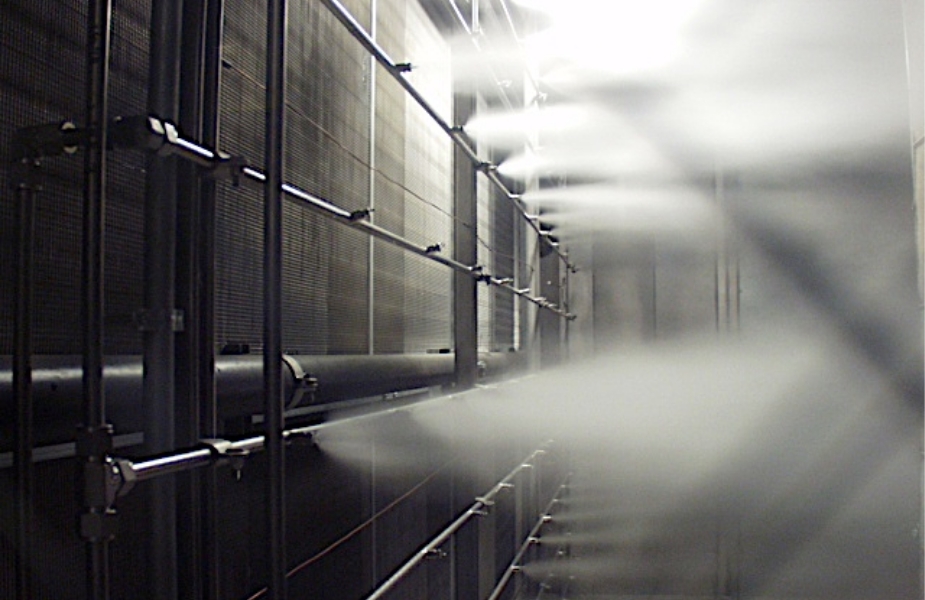
Iowa State University Gold LEED Chemistry Laboratory
MeeFog Humidifier Installation
Location: Ames, Iowa USA
Make-up air units: 4 x 60,000 CFM
Design target: 70 °F 30% RH
Mee’s scope of work: Supply of fog pump skid, staging valves, nozzle manifolds, and mist eliminators. Supervision of installation and startup.
Humidification System Design:
Humidification capacity: 4,800 #/hr
Total horse power: 2 x 5 HP
Max. water flow: 14 gpm
Humidification stages: 15
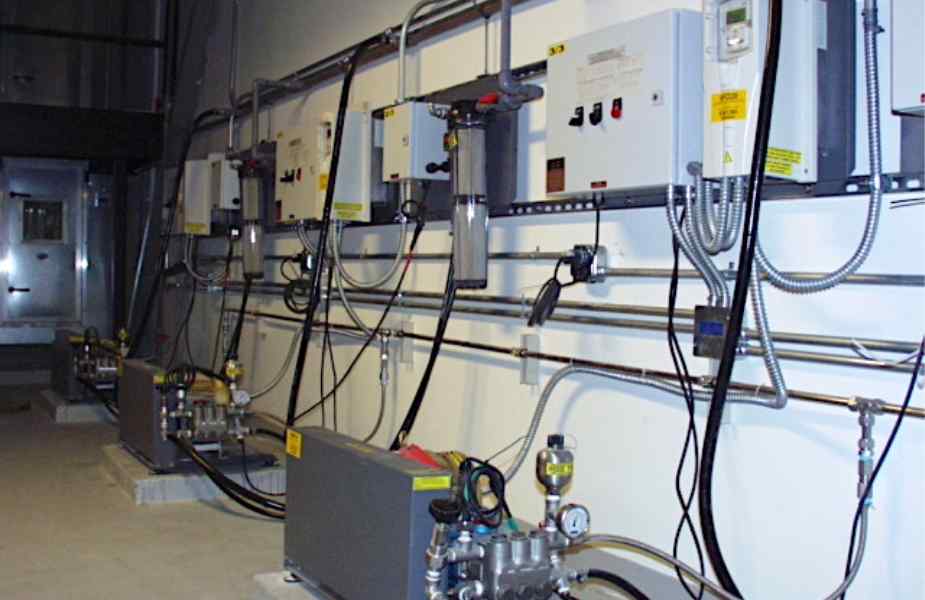
In 2011, ISU’s Hach Hall became the first chemistry building in the country to achieve LEED Gold certification from the Green Building Council. Chemistry laboratory AHUs have high humidity loads, and because of the need to continually exhaust any fumes, they operate at 100% outside air driving up energy costs. The MeeFog system provides cost effective and efficient humidification to the laboratory.
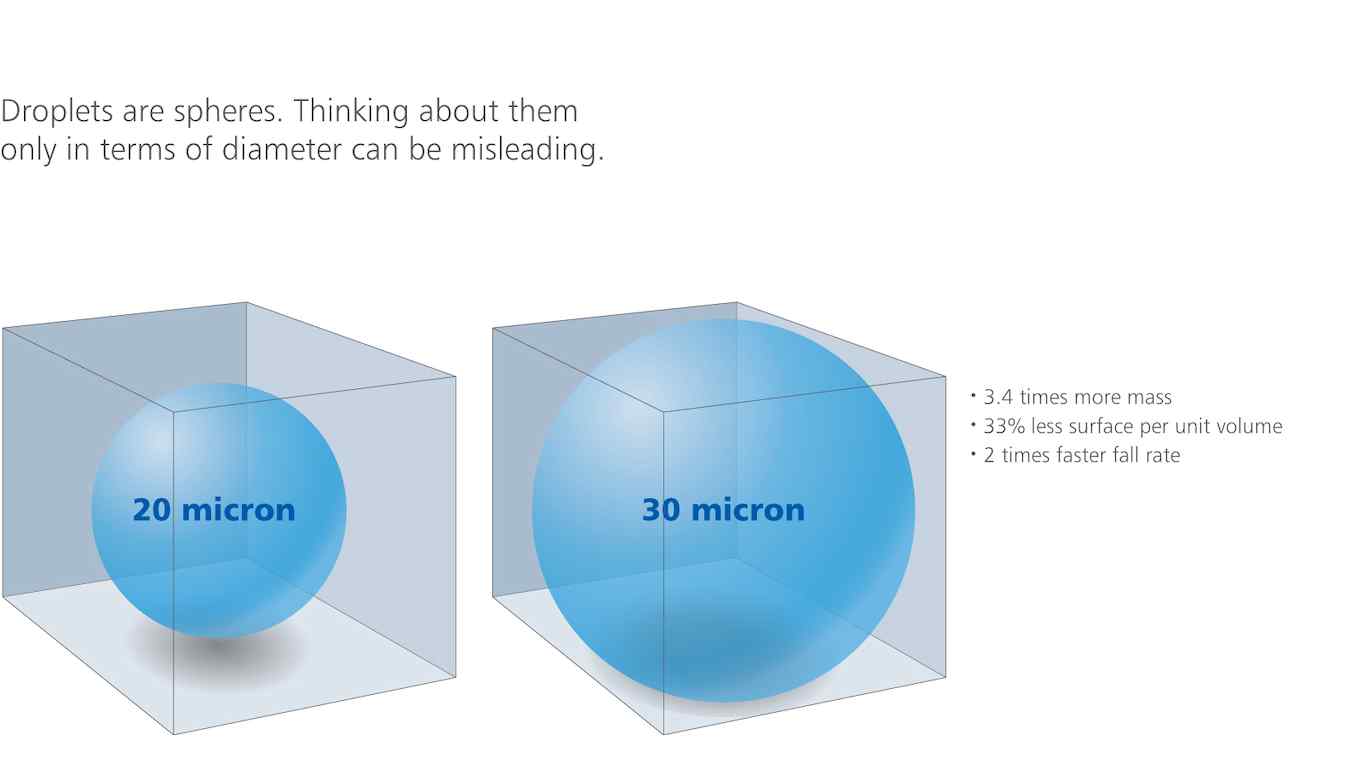 Want Proof?
Want Proof?